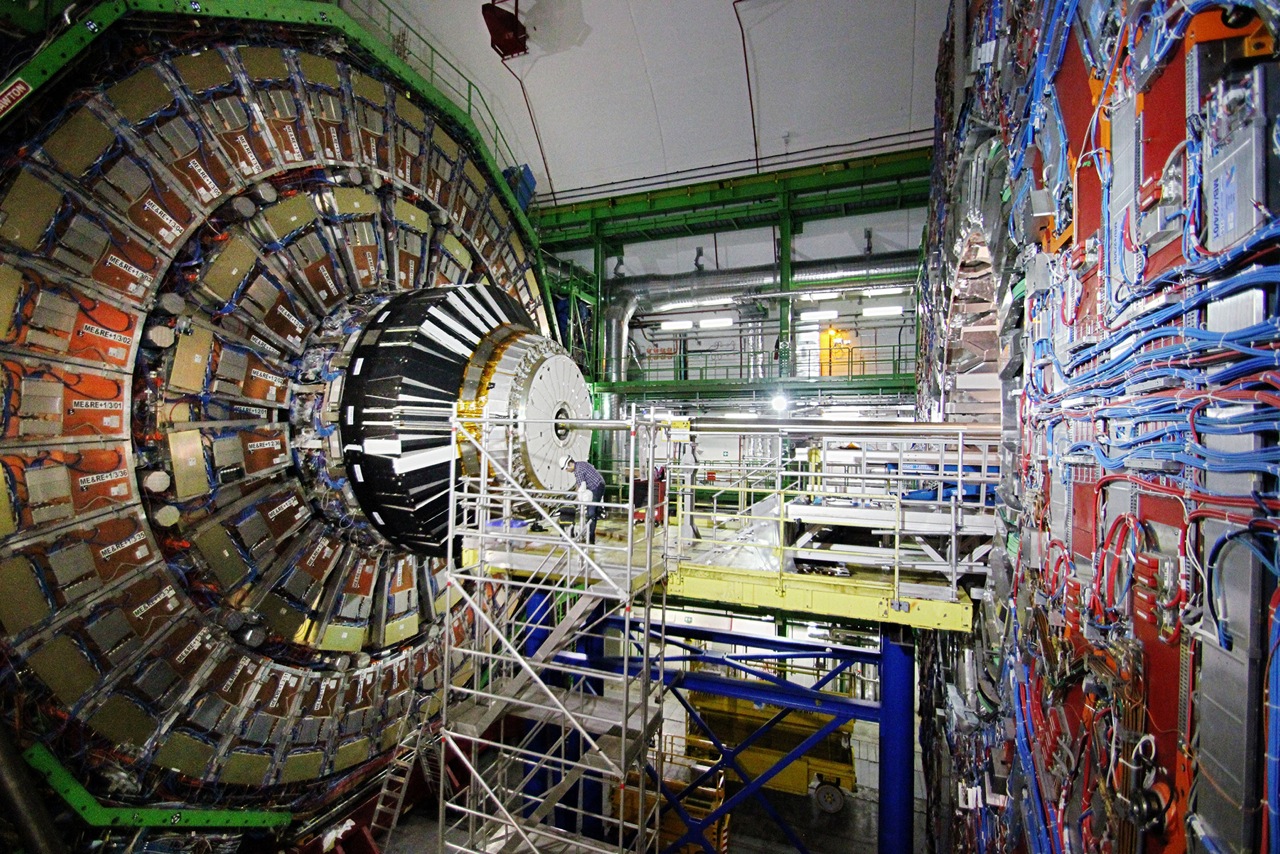Dr. Harry Cliff, a Physicist working on the LHCb experiment and the first Science Museum Fellow of Modern Science, writes about his recent filming trip to CERN for Collider, a new Science Museum exhibition opening in November 2013. The first part can be read here.
Day 2, Thursday
On the first day of the Collider exhibition team’s visit to CERN we had explored the architecture and interiors of the town-sized laboratory. Now it was time to enter its beating heart: the gigantic experiments probing the fundamental laws of the universe, and the people who make them a reality.
Our team now divided. Pippa, Finn and crew set off to the far side of the 27km LHC ring to Point 5, home of the enormous Compact Muon Solenoid (CMS) experiment. 100 metres underground, 25 metres long, 15 metres high, weighing in at 12,500 tonnes and containing enough iron to build two Eiffel Towers, CMS is one of the four huge detectors that record the particle collisions produced by the Large Hadron Collider. It is also a remarkable sight, beautiful even, its concentric layers giving it the appearance of a gigantic cybernetic eye. One member of the team said it was the most incredible thing he had ever seen, with only the Pantheon in Rome coming close to matching it.

CMS was photographed from every angle so that it can be recreated in a 360 immersive projection for the Collider exhibition. The CMS team were incredibly accommodating in allowing us to get our cameras as close to CMS as possible, all while they carried out vital work on the detector. We owe particular thanks to the boundlessly energetic Michael Hoch who looked after us for the day and made it all possible.
Meanwhile, 13km around the ring, in a less spectacular CERN office, our radio producer and I carried out audio interviews of LHC physicists and engineers. Each of them sharing what makes them tick as scientists and inventors. One even surprised us by dismissing the discovery of the Higgs boson as “boring”; what drives him as a scientist is seeking answers to new questions. For him the Higgs threatens to be a dead-end on the journey of discovery, rather than opening up new avenues of inquiry. Over the course of the day we interviewed five members of CERN’s international community, drawn from across Europe, representing a diverse cross section of CERN’s most important asset, its people.
Day 3, Friday
The last day might have been the most challenging. The team assembled at CERN’s custom-built TV studio to film interviews with LHC engineers against a green screen. These are the people who build and operate CERN’s experiments and they will appear as full-body projections in the exhibition, as if museum visitors have wandered into the LHC tunnel to be met by a friendly member of staff. Over dinner the night before we had shared anxieties as to how it might go. Video, unlike audio, can’t be edited to remove fumbled words or long pauses – our interviewees would have to deliver near-perfect speeches, and none of them had ever done anything like this before. In fact, neither had any of us.
Our concerns were unfounded. The engineers were naturals and by the end of the day we had recorded some brilliant interviews that should really help bring CERN to life for the visitors to the exhibition.
We returned to London that evening, exhausted but carrying a huge amount of material, covering almost every aspect of the Large Hadron Collider. For the first time I really have a sense of what this Collider exhibition will become; it’s going to be quite something to see it take shape over the next five months. If you can’t make it to Geneva to see the LHC in person, you’ll find a healthy slice of the world’s greatest experiment at South Kensington this November.